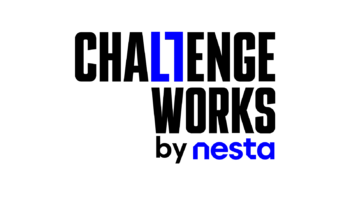News – News
Mombasa Plastics Prize invites young entrepreneurs to dive deep
27 September 2022
Today Challenge Works, together with USAID and Global Affairs Canada, launches the Mombasa Plastics Prize to seek out innovative ideas to tackle marine plastic pollution on the Kenyan coastline in Mombasa.
Why target marine plastic pollution in Mombasa?
Mombasa County, which includes Kenya’s largest coastal city and East Africa’s largest port, Mombasa, is a hotspot for marine plastic pollution. Mombasa generates approximately 120 tonnes of plastic waste every day, a significant proportion of which is spilling into the ocean. The city’s plastic recycling rate is only 5%, which adds to the problem.
With a growing population and few viable alternatives to many essential plastic products, the build up of plastic waste is likely to get worse. To avoid this, there is an urgent need to accelerate innovation, from developing alternatives to plastic to alternative recycling schemes.
The good news is there is huge untapped potential for innovation amongst Mombasa’s young people, including those based in informal settlements. Kenya has a burgeoning entrepreneurial ecosystem, buoyed by young adults, who can help to drive the development of sustainable locally-led solutions.
How does the prize work?
The Mombasa Plastics Prize invites young adults (aged 18 and 25) across Mombasa County to develop ideas and help tackle plastic waste.
Sixty individual competitors will be selected as finalists, then grouped into teams to develop, test and ultimately deploy their ideas to tackle this problem.
All finalists will be supported with coaching and training, through a series of hack events, as well as seed funding.
In May 2023, three finalist teams will be awarded prizes worth approximately $60,000, with the winning team taking home approximately $30,000 to take their innovation even further.
We are open for entries!
If you are an aspiring entrepreneur living in Mombasa, and between the ages of 18 and 25, please come forward with your ideas to tackle this issue of marine plastic pollution!
We are especially eager for young women and those living in informal settlements to apply.
-
References
- IUCN-EA-QUANTIS (2020). National Guidance for plastic pollution hotspotting and shaping action, Country report Kenya.
- Palfreman, J., & Clark, M. (2015). Mapping out waste characteristics in Mombasa, Kenya.
- Lebreton, L. et al. (2012). “Numerical Modelling of Floating Debris in the World’s Oceans.” Marine Pollution Bulletin. 64, 653–661
- Lau, T. et al. (2020). “Evaluating scenarios toward zero plastic pollution.” Science. 369(6510), 1515-1455.
- Lau, T. et al. (2020). “Evaluating scenarios toward zero plastic pollution.” Science. 369(6510), 1515-1455.
- Chartered Institution of Waste Management (CIWM) and WasteAid UK (2018) From the land to sea – How better solid waste management can improve the lives of the world’s poorest and halve the quantity of plastic entering the oceans, CIWM and WasteAid.


